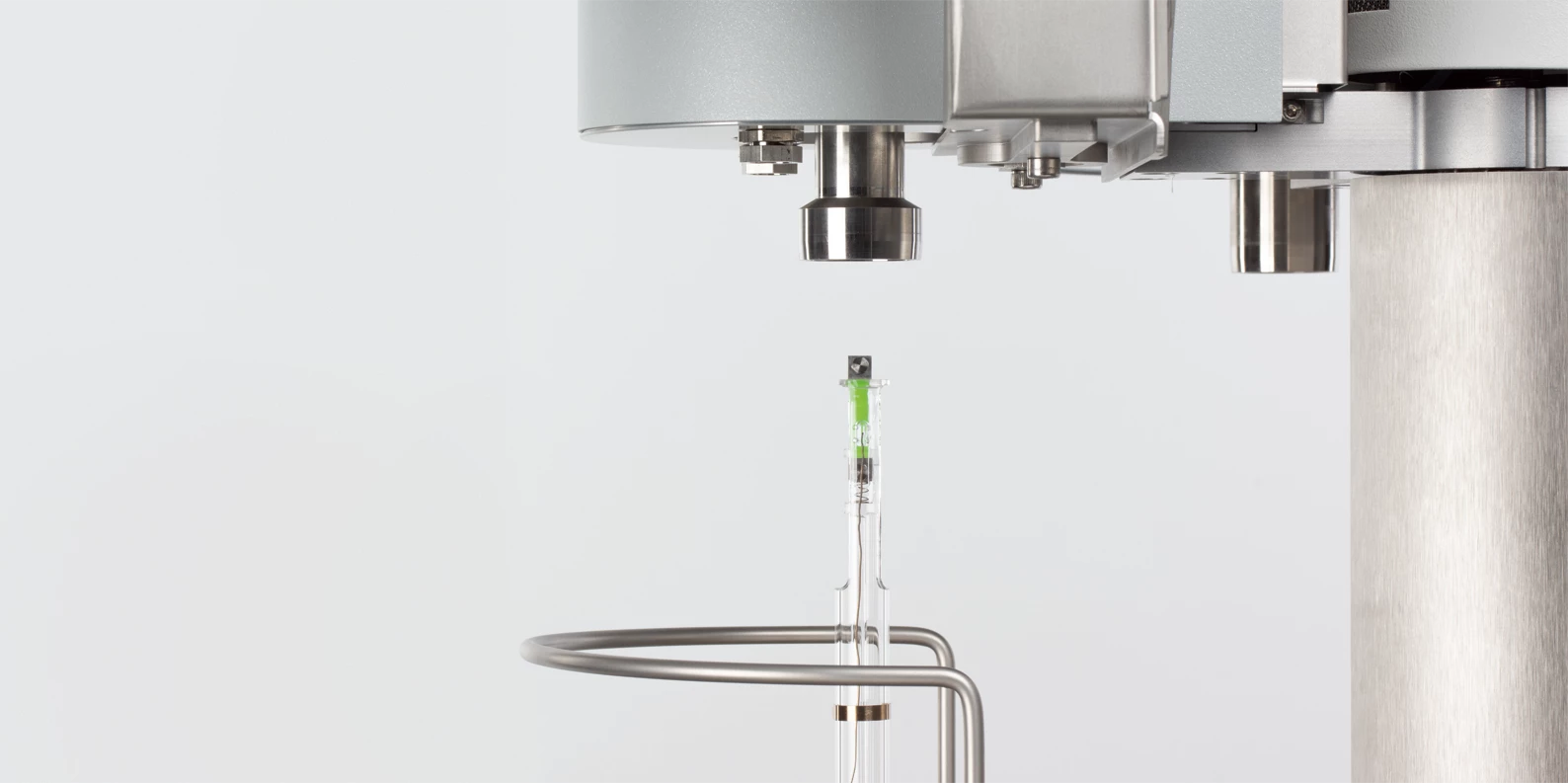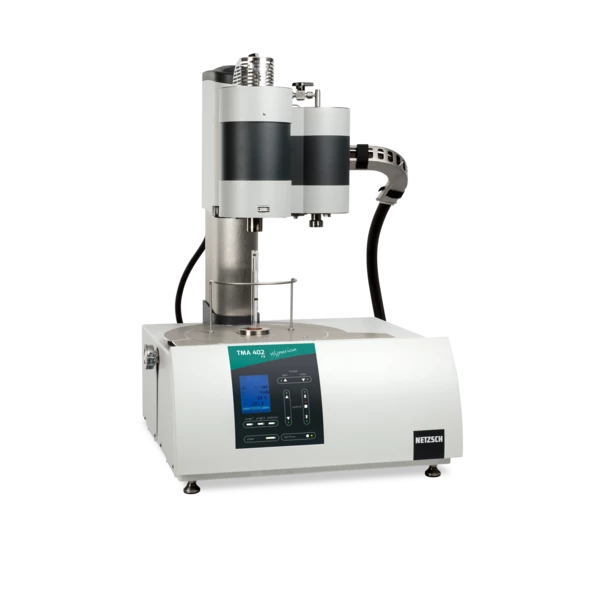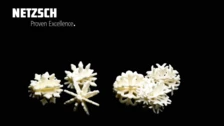
열기계적 분석
열기계적 분석 – Thermomechanical Analysis (TMA)
가열이나 냉각하는 동안 많은 재료들은 열팽창 특성의 변화가 수반되어 나타납니다. 예를 들어, 상전이, 소결 거동이나 연화점 등은 열팽창에 추가적으로 나타납니다.
TMA 분석은 조성, 구조, 생산 조건이나 다양한 재료에 대한 응용 가능성에서 유용한 정보를 보여줍니다. 열팽창 분석법을 위한 장비의 응용 분야는 품질 보증부터 시작해서 연구 및 개발 분야까지 확장됩니다. 일반적인 범위는 플라스틱과 탄성체, 페인트 및 염료 및 혼합 물질, 접착제, 필름 및 섬유, 세라믹, 유리, 금속 및 그 화합물 등입니다.
열팽창계수 분석장비 (TMA) 는 일정 기계적 하중하에서 온도 및 시간에 따른 함수로 고체, 액체나 페이스트 물질의 면적 변화를 측정합니다. (DIN 51 005, ASTM E831, ASTM D696, ASTM D3386, ISO 11359 – Parts 1 to 3). 이 규격는 극소의 하중하에서 시료의 길이 변화를 측정하는 Dilatometry (수직형 열팽창계수 측정장비) 와 상당히 유사합니다. (e.g. DIN 51 045).
TMA 402 F3 Hyperion® Polymer Edition
Thermomechanical Analysis – TMA - Tailor-Made for Low-Temperature Applications
Polymers undergo changes in their thermomechanical properties during heating and cooling. TMA analyses can give insights into molecular orientation and quenching effects during cooling. It allows the design of adhesives and other hybrid joints and quality control of shrink films.
TMA 402 F1 /F3 Hyperion®
Thermomechanical Analyzer - Vertical Dilatometer
Modular Concept with interchangeable furnaces (compatible with other NETZSCH instruments) for easy and cost-effective expansion and retrofitting.Gas flows with up to 4 MFCs, controllable via software with programmable atmosphere change for the analysis of e.g. OxidationOxidation can describe different processes in the context of thermal analysis.Oxidation behavior without manual valve operation

Thermal Expansion
The linear thermal expansion is an important variable for assessing the dimensional behavior of a material in response to a change in temperature.
This plot shows the thermal expansion (dL/L0 in %) of an epoxy resin between -70°C and 270°C. In the first heating (blue curve), the onset of the Glass Transition TemperatureThe glass transition is one of the most important properties of amorphous and semi-crystalline materials, e.g., inorganic glasses, amorphous metals, polymers, pharmaceuticals and food ingredients, etc., and describes the temperature region where the mechanical properties of the materials change from hard and brittle to more soft, deformable or rubbery.glass transition (Tg) occurs at 123°C. In the second heating (red curve), the onset of Tg is slightly shifted, to 125°C. This shift could be due to RelaxationRelaxation은 고무에 일정한 변형률이 가해지면, 변형률을 유지하기 위해 필요한 힘은 일정하지는 않지만 시간에 따라 감소합니다. 이러한 특성을 ‘응력 완화’라고 부릅니다. 응력완화의 원인이 되는 과정은 물리적 또는 화학적 그리고 정상적인 조건 하에, 둘 다 동시에 일어날 수 있습니다. relaxation effects or post-Curing (Crosslinking Reactions)Literally translated, the term “crosslinking“ means “cross networking”. In the chemical context, it is used for reactions in which molecules are linked together by introducing covalent bonds and forming three-dimensional networks.curing.
재료/응용분야 문헌

MEASUREMENT WANTED?
Our NETZSCH applications laboratory is providing contract testing services for a wide range of industries and research centers. It is equipped with state-of-the-art testing instruments allowing for a variety of thermal analysis measurements to be carried out.
Consult with the experts in our applications labs to choose the best-suited measuring method for your specific needs.







